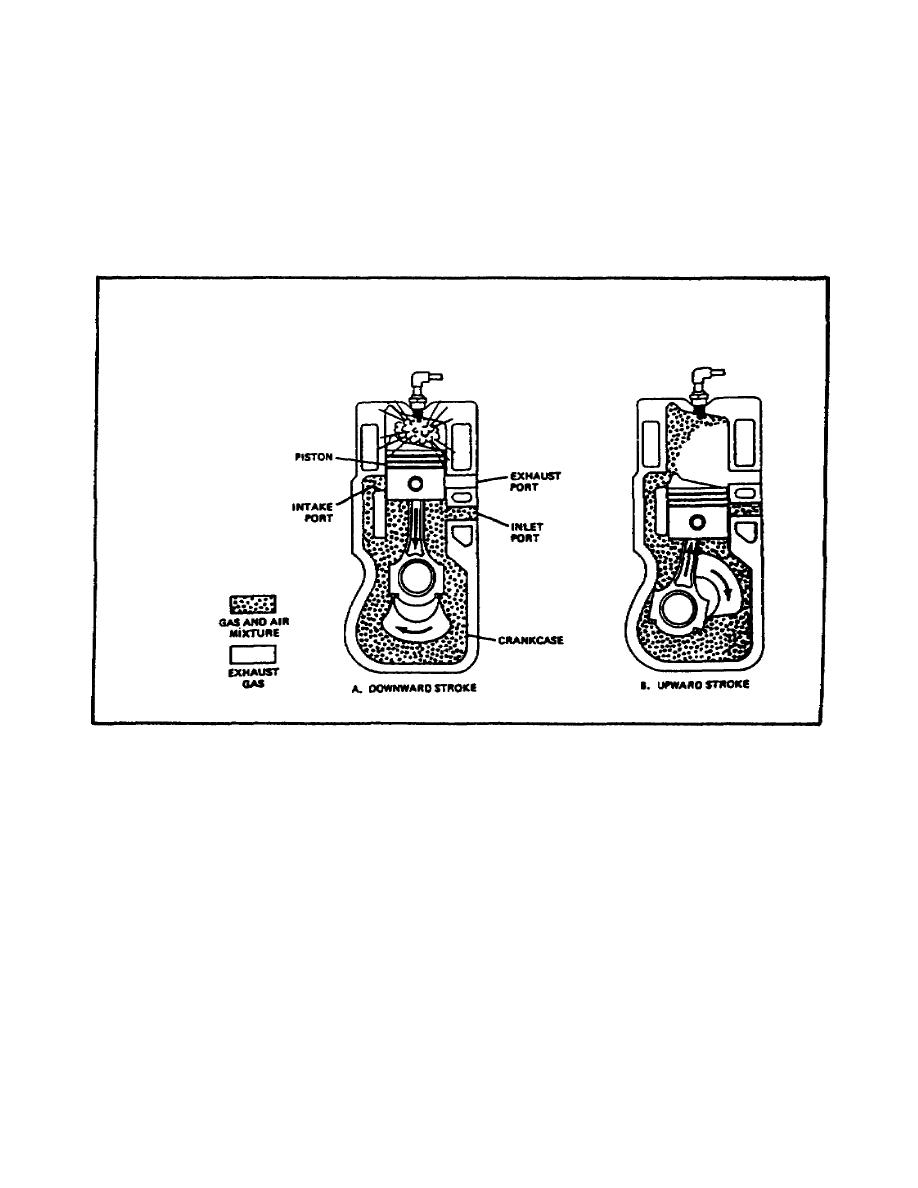
PRIN. OF INTERNAL COMBUSTION ENGINES - OD1619 LESSON 1/TASK 1
(b) Upward Stroke (figure 12, view B). As the piston moves upward, it covers
the intake and exhaust ports. This seals the upper cylinder so that the upward
movement of the piston compresses the fuel and air mixture. At the same time, the
upward movement of the piston creates a suction in the crankcase so that as the
inlet port is uncovered, a mixture of fuel and air is drawn into the crankcase. As
the piston reaches top dead center, the spark plug ignites the fuel and air
mixture, beginning the downward power stroke again.
FIGURE 12. THE TWO STROKE CYCLE.
(c) The Fuel and Lubrication System. The fuel and air mixture must first pass
through the crankcase before it gets to the combustion chamber. For this reason,
the fuel and air mixture must also provide lubrication for the rotating and
reciprocating parts. This is accomplished by mixing a small percentage of oil with
the fuel. The oil, mixed with the fuel and air mixture, enters the crankcase in a
vapor that constantly coats the moving parts.
(d) Power Output. It may seem that a two stroke engine will put out twice as
much power as a comparable four stroke cycle engine because there are twice as many
power strokes. However, this is not the case. Because the force of the fuel and
14



 Previous Page
Previous Page
